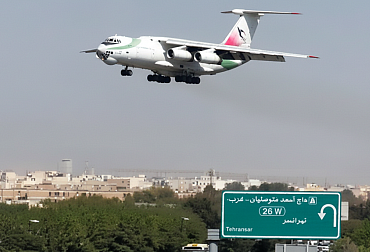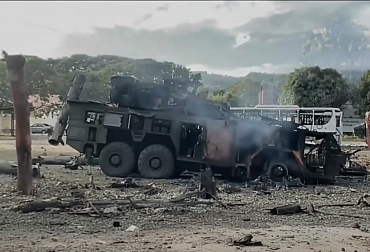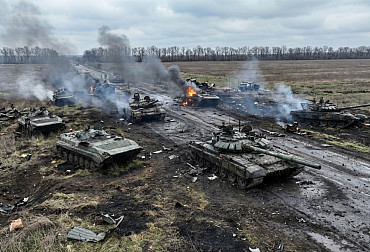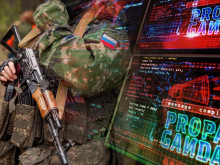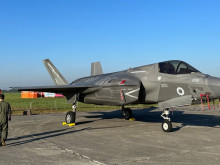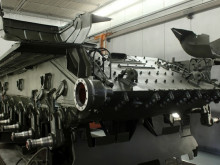Heron drones as part of the system transformation of the Czech Army
The Czech Army announced last May that it was postponing the planned purchase of Heron tactical drones and would now buy two hundred smaller drones instead. The move was mainly justified by studying the experience of the war in Ukraine, where the smaller drones proved very useful. Although this argument has a certain logic, the acquisition of tactical drones should definitely not be delayed significantly, also in view of the goals set by the recently approved Concept of the Construction of the Czech Army 2035.
These include the establishment of an advanced command and control system that will ensure the military's information dominance in all domains. Large unmanned aerial vehicles are one of the key elements of such a system, which today illustrates the importance of deploying Heron assets in the Israeli military. Few manufacturers can boast as much experience in the field of drones as Israel Aerospace Industries (IAI), an Israeli state-owned company under the Ministry of Defense, which embarked on their development in the 1970s. Its products, such as the Scout drone, then contributed significantly to the success of the Israeli intervention in Lebanon in the 1980s, or rather to the Israeli victory over the Syrian air force and anti-aircraft systems.
Based on this experience, the Jewish state then developed subsequent generations of drones, and in 1994 a prototype Heron machine first flew, entering service in 2005 under the Hebrew name Machatz-1. In addition to its impressive career in the Israeli Defense Forces, the Heron-1 has also had extensive export success, having been introduced by more than a dozen other countries, including several NATO members, including Canada, Germany, Greece and Turkey. Mention must also be made of France, which has used the Heron as the basis for its own device called Harfang. In addition to Western countries, Heron has also achieved commercial success in the Asian market.
Heron - the most advanced universal unmanned platform
While it is sometimes argued that the Heron is outdated for the time of its birth, this is a fallacy, as it ignores the design and evolutionary philosophy applied to the Heron family of machines, which is based primarily on the gradual improvement of proven concepts. It is precisely because of its long operating experience that Heron is a typical example of a design that is constantly evolving and can provide more and more capabilities. Since its inception, Heron was one of the first drones to be equipped with an on-board radar and has gradually evolved into a truly multi-purpose platform capable of carrying 470 kg of payload. In addition to the aforementioned synthetic aperture radar, it can carry opto-electronic and infrared sensors or electronic, signal and communications intelligence tools (ELINT, SIGINT and COMINT). It can thus monitor the target area, conduct reconnaissance, map the terrain and locate and target, in a variety of ways, day or night and in all weathers. However, this is only the beginning of the range of capabilities of Heron assets.
In addition to its wide range of sensors, it is equipped with secure broadband communications systems that allow it to transmit acquired data via terrestrial and satellite communications. It can also be deployed as a relay station that mediates communications for other platforms. Thanks to its laser sight, it can be used to guide precision artillery and air strikes and also meets the Czech Army's requirement for the ability to independently conduct precision strikes on significant ground targets. Heron can also carry guided weapons, including anti-tank missiles or small guided bombs. Some media reports have claimed that Heron does not have the ability to carry weapons, but this misconception stems from the policy of the Israeli state, which for a long time did not want to confirm that its drones do indeed have this capability, but official confirmation was made some time ago.
This was in connection with the delivery of Heron TPs to Germany, which also required the ability to carry weapons. The Heron TP version, which offers higher performance than the standard Heron thanks to its turboprop propulsion, represents another example of the evolutionary philosophy of the state-owned IAI, as it organically builds on the original Heron design, with which it shares some systems. In contrast, the smaller and less expensive Tactical Heron is designed for less demanding customers. The Czech Army has expressed interest in the latest version of the Heron, with the possibility of acquiring the Heron Mk II variant under consideration. In any case, the Heron series drones represent multi-purpose modular platforms and IAI always caters to the requirements and conditions of specific customers, so the final configuration of Heron drones for different customers varies. Therefore, the Heron machines for the Czech Army would also match what the army would specifically require.
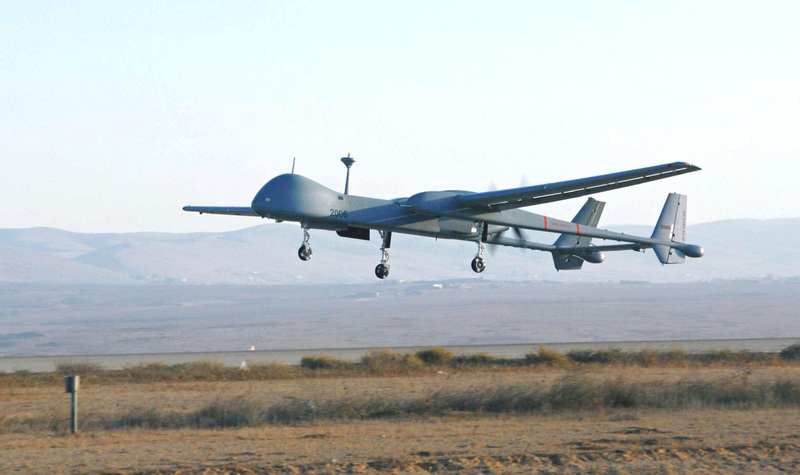
At this point, it can be mentioned that the Israeli side, in addition to the sale, also offers the possibility of renting Heron series vehicles, which has already been used by some operators, including Germany. Should the Czech Republic also express interest in such a model, this would of course also enable cooperation with Germany in the operation and deployment of these drones. Leasing would also naturally require lower costs, and since the funds originally earmarked for the purchase of Herons are now to be used to acquire smaller drones, leasing would allow the Israeli machines to be put into service sooner. The Czech Republic would thus be able to acquire the originally intended system comprising Heron drones so that the army could begin operating, training and gaining experience. In this context, it can be added that the Concept for the Construction of the Czech Armed Forces 2035 also talks about the intention to use drones as a replacement for the current subsonic fighters, and since the Heron aircraft can carry a wide range of precision-guided weapons, it is prospectively offered as a suitable candidate for this role.
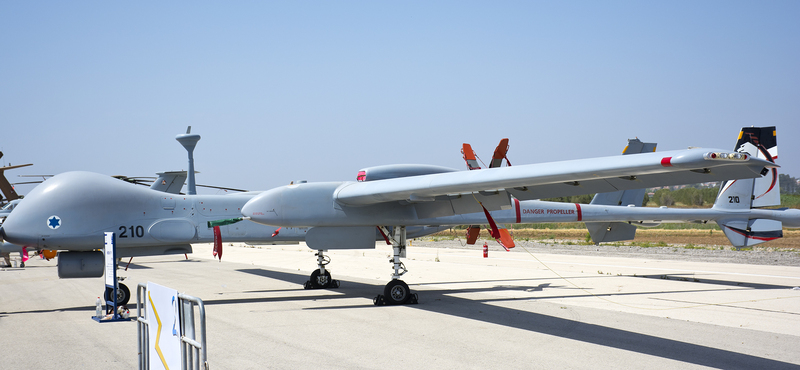
Digital command and control system needs powerful UAVs
However, the introduction of Heron assets also fits very well into another, certainly even more important plan described in the ACR Construction Concept 2035. This is to build a modern command and control system, which should be completely digital and should connect all forces in all domains. Czech commanders should have a perfect overview of the situation on the battlefield in real time and should have large amounts of data for decision-making. These prerequisites should therefore provide the Czech army with information superiority over the adversary in a hypothetical conflict. Other NATO armies are setting similar goals, but the first country to actually build and deploy such a system is (not surprisingly) Israel. Its army is therefore the first in the world in which all forces are informationally linked to form a truly single combat system that enjoys total information dominance over the enemy.
The ongoing conflict with the terrorist organisation Hamas in Gaza proves this, as fighting in an urban environment is traditionally one of the most complex tasks. Keeping a good overview of the situation in these complicated conditions is extremely challenging, but Israel is indeed managing it, thanks in particular to the systemic transformation of its army, of which modern drones, including the Heron machines, are an important element. These are operated by the 200th Squadron of the Israeli Air Force, the first ever Israeli military unit to adopt unmanned aircraft, which happened back in the 1970s, so its experience is really impressive. Heron aircraft are therefore also making a significant contribution to Israel's current war effort. They operate over Gaza, where they carry out reconnaissance, target acquisition and data relay and distribution, and therefore represent one of the cornerstones of Israel's command and control system. The Czech Army wants to build a similar system and therefore cannot do without modern drones of this category.
Finally, a brief response can be made to the argument about the vulnerability of larger drones, which (allegedly) manifested itself in the war in Ukraine. Indeed, the fact is that larger drones on both sides suffered losses, which is why the Ukrainians and Russians have switched to using mostly small machines. It should be noted, however, that those larger drones that have proved vulnerable to air defence and electronic warfare systems (e.g. the Turkish-made Bayraktar TB2 UAV) were generally not designed to be deployed in such an environment, as they were developed more for asymmetric conflicts with technically backward enemies, and therefore found to be relatively easy to shoot down or have their signals jammed. The Heron, on the other hand, certainly does not suffer from these weaknesses, as it is envisaged from the outset for use in high-intensity conflicts where it must defy advanced defence systems.
The inclusion of Heron drones in the Czech Army would certainly mean a considerable benefit for the Czech defence industry, which cooperates in many areas with the Israeli one. Czech companies could certainly participate in the production of Heron drones or support equipment, especially ground control stations and chassis for their movement, which meet NATO standards. Moreover, an order for Heron drones would represent a strong symbol of support for the Jewish state, which continues to meet its export commitments despite the current difficult situation. However, Israel's economy is obviously under great pressure, so it needs important orders for its industry more than ever. The Czech Republic has traditionally been one of Israel's most vocal supporters on the international stage and the award of such a contract would clearly confirm the close and largely unique relationship between the two countries. In any case, the Heron assets would make an enormous contribution to the development of the Czech Army's capabilities and would make a major contribution to its transformation into an advanced and effective force for the 21st century battlefield.












